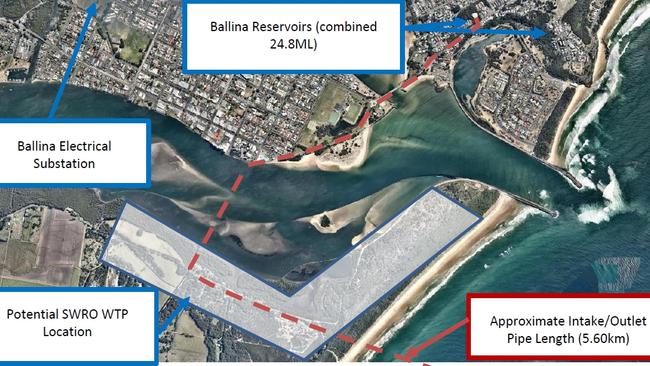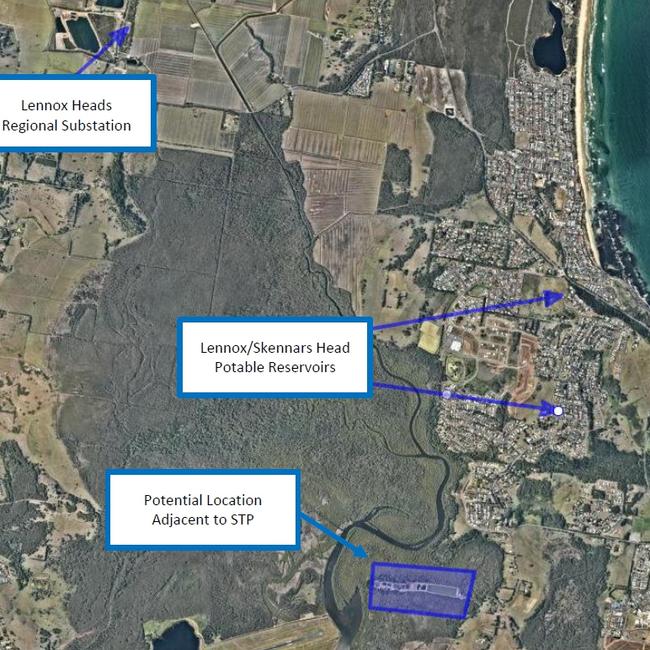Why Ballina is not getting a desalination plant
TWO potential locations within the Ballina Shire have been labelled not suitable for the development.

Ballina
Don't miss out on the headlines from Ballina. Followed categories will be added to My News.
TWO potential locations for a possible desalination plant in the Ballina Shire have been labelled not suitable for development.
Ganden Engineers and Project Managers completed the feasibility assessment for Rous County Council as a future extra water supply option for the region.
South Ballina and the coastline between Lennox Head and Skennars Head were the two locations studied by the engineers, as they would have been relatively easy to connect to the existing potable water storage networks.
According to the study, Ballina, Lennox Head and Skennars Head have a population of 26,288, demanding daily 6.5 mega litres (ML) of water.
By 2036, the estimated population of the area will be 29,789, with a projected water demand of 7.3ML daily.
The proposed South Ballina location would have supplied water to the Ballina Heights Potable Water Network to connect power and product water across the Richmond River.
This would made the option a "considerable additional expense to the supply scheme", calculated in between $5m and $10m just for drilling.
Also, during periods of high rainfall, there was a significant risk of outfall plumes at the Richmond River seaway.
A proposed 5ML a day plant would have serviced the current population of Ballina.
A future expansions to the plant of up to 10 ML a day would have provide complete resilience to the townships of Ballina, Skennars Head and Lennox Head, according to the document.
Also, the South Ballina location was not selected because it would be located in a flood zone and at risk of inundation and being isolated during floods.

The Lennox Head and Skennars Head would only need 1ML a day by 2036, so the excess would have required a pipeline connecting to transport the water to Ballina, "which is likely prohibitive to adoption of this location," the report said.
The document is part of Rous County Council's proposed Future Water Project 2060 - a $245 million plan to future-proof the community's drinking water supplies for the next 40 years, currently on public exhibition by Rous County Council.


